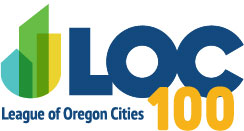Broadband
The term “broadband” commonly refers to high-speed Internet access that is always on and faster than traditional dial-up access. Broadband includes several high-speed transmission technologies, such as fiber, wireless, satellite, digital subscriber line and cable. For the Federal Communications Commission (FCC), broadband capability requires consumers to have access to actual download speeds of at least 25 Mbps and actual upload speeds of at least 3 Mbps.
The 2020 Oregon Broadband Study estimated that it would cost $1.32 billion to connect all unserved and underserved communities with broadband internet access service.
State Broadband Resources
State Broadband Office – The Oregon Broadband Office was created by Gov. Kate Brown through executive order in 2018. HB 2173 (2019) solidified the office in statute. The Oregon Broadband Office mission is to promote access to broadband services for all Oregonians in order to improve the economy and quality of life.
Oregon Broadband Advisory Council - The mission of the council is to encourage coordination and collaboration between organizations and economic sectors to leverage the development and utilization of broadband for education, workforce development and telehealth, and to promote broadband utilization by citizens and communities.
Oregon Public Utility Commission (PUC) - The Oregon Public Utility Commission (PUC) is responsible for balancing regulation and competition to encourage innovation in the telecommunications industry. This helps ensure high quality services to Oregon residents at just and reasonable rates. There are many types of telecommunications service providers with differing levels of PUC regulatory oversight. The PUC also oversees low-income broadband subsidies that reside in the Oregon Lifeline program.
Broadband Funding Sources
BroadbandUSA Funding Guide - The National Telecommunications and Information Administration has released a database with information on more than 80 federal programs across 14 federal agencies with funding available for broadband-related purposes. This comprehensive “one-stop shop” highlights funding opportunities that include direct grants, loans, indirect support, and discounts for industry, state and local governments, schools, libraries, small businesses, and other community institutions that are interested in expanding and improving broadband access.
ARPA State and Local Recovery Funds – Local shares of ARPA can be used on investments broadband infrastructure. See treasury guidance for more information.
ARPA Capital Projects Funds - The state of Oregon received a $156 million allocation of ARPA Capital Project Funds and $120 million of those funds were allocated, under HB 5006, to Business Oregon for broadband infrastructure projects. On Monday, September 20, the U.S. Department of Treasury released guidance for the American Rescue Plan Act’s Coronavirus Capital Projects Fund. The Capital Projects Fund is a flexible $10 billion fund to states and territories for investment in “Capital Projects designed to directly enable work, education, and health monitoring.” While this fund will be controlled by states, state governments will have the ability to target covered projects for specific communities in need and may opt to subgrant funding to local governments.
Municipally Owned Broadband
Why Municipal Broadband? Municipal broadband is sometimes the only way to bring high-speed internet to a community and it can serve as an access point to neighboring communities. Additionally, municipal broadband adds competition to the market and can help lower prices for community members.
Current Municipal Networks
Ashland Fiber Network (AFN) – The city of Ashland owns, manages, and maintains the telecommunications infrastructure of AFN, then leases to preferred locally owned ISPs so customers can choose the best provider for their needs.
CGWiFi – The city of Cottage Grove manages the fiber-optic network and partners with an ISP to provide free and subscription Wi-Fi services. The fiber optic and WiFi system were developed to primarily to create infrastructure capacity, provide connectivity and enhance technology available for South Lane School District and Lane Community College and to improve broadband service for public safety and government operations.
EUGNet – The city of Eugene along with the Eugene Water Electric Board, the Lane County Council of Governments and the support of the Tech Association of Oregon created an open access fiber network in Eugene downtown. The fiber strands run underground from a central exchange to individual buildings.
HiLight – HiLight is a high-speed fiber broadband internet service provided by the city of Hillsboro. The city will be focusing on placing fiber for new developments as roads and homes are built and then they will prioritize parts of the city with the lowest connectivity rates. Recently, the City of Hillsboro partnered with the Hillsboro School District to connect all District schools and classrooms to a shared fiber network by spring 2020.
City of Maupin – Qlife, GorgeNet, and the city of Maupin coordinated efforts to offer a fiber to home and fiber to business network. The fiber network servicing Maupin businesses and residents is owned by the city of Maupin through funding provided by the State of Oregon.
MINET – MINET is a joint venture between the cities of Independence and Monmouth. They provide fiber internet to the cities of Independence, Monmouth and recently Dallas.
QLife – QualityLife Intergovernmental Agency (QLife) is a collaborative effort between The Dalles and Wasco County. QLife created a 17-mile fiber optic loop through the city. The goal is to enhance the region's economic development efforts with a reliable, cost effective, open access link to the Bonneville Power Administration's fiber, which runs through The Dalles. The utility is managed and supported by the city through a contractual agreement.
Sherwood Broadband - Formed in the early 2000s, Sherwood Broadband provides internet and private network services to businesses located in the City of Sherwood. The fiber-based network encompasses much of the City of Sherwood and major portions of the Portland Metro area, with over 100 miles of fiber.

